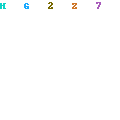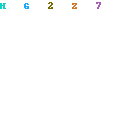New forms of media publishing.

| at 1:09 PM






| at 12:43 AM
| at 11:43 PM
This post is going to discuss about different types of blogs. The term “blogs” is a shortened form of "web logs." (Sherry Holetzky, 2010) The current size of the blogosphere is currently uncountable, we could imagine how many blogs are created in our world. The most common way to classify a blog is using tags. According to the research, tag expansion helped to improve the recall of blog classification with the price of precision degradation. (Aixin Sun, Maggy Anastasia Suryanto and Ying Liu, 2007)
According to the research paper (Teh Phoey Lee Phoebe, 2007), blogs can be categorized by media, device, genre and legal status of publisher. Based on category by media, a blog that contains video clips is called a video blog, or vlog. For example, youtube.com. Blogs with shorter posts and mixed media types are called tumblelogs. The ones comprising links are called a linklog, which is crazyting4ever.blogspot.com. A site containing a portfolio of sketches is called a sketchblog, while one comprising photos is called a photolog. (Teh Phoey Lee Phoebe, 2007)
According to Teh Phoey Lee Phoebe(2007), category by device, a blog written through a mobile device, such as a mobile phone or PDA, is called a moblog. Some blogs focus on a particular subject, such as political blogs, travel blogs, fashion blogs, project blogs, or legal blogs. While not a legitimate type of blog, one used for the sole purpose of spamming is known as a Splog. (Teh Phoey Lee Phoebe, 2007)
In my opinion, there are many blogs are combinations of styles. The blog will be much more attractive this way, it clarify the main message that the writer want to send to the audience more clearly and in different ways as in videos, audios, pictures and words.
References
Aixin Sun, Maggy Anastasia Suryanto, Ying Liu, 2007, Blog Classification Using Tags: An Empirical Study, viewed on 29/9/2010, retrieved from
| at 10:30 PM
| at 9:25 PM
